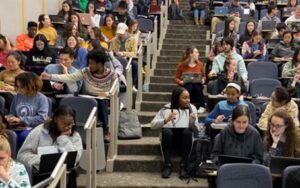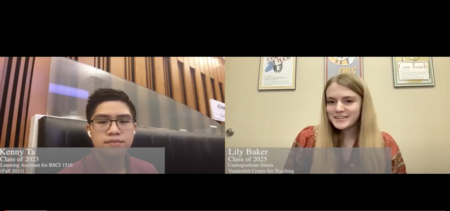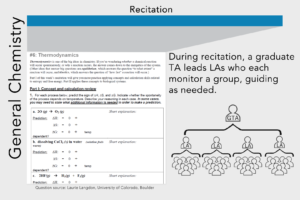What is a Learning Assistant?
 Learning assistants, or LAs, are undergraduates who serve as peer educators in courses that they have previously taken. They facilitate small-group discussions, listen to students’ ideas, and prompt students to think deeper about challenging content. They often help in implementing active learning components of a course, helping students think through exercises in which they answer work in groups to answer conceptual questions, work on problems, discuss different scientific models/perspectives, or summarize/organize complex material. Thus, LAs’ role within the course is to promote student discussion and understanding in class; they do not grade or fill other administrative roles. The University of Colorado at Boulder was the first institution to develop an LA program and serves as an anchor in the Learning Assistant Alliance.
Learning assistants, or LAs, are undergraduates who serve as peer educators in courses that they have previously taken. They facilitate small-group discussions, listen to students’ ideas, and prompt students to think deeper about challenging content. They often help in implementing active learning components of a course, helping students think through exercises in which they answer work in groups to answer conceptual questions, work on problems, discuss different scientific models/perspectives, or summarize/organize complex material. Thus, LAs’ role within the course is to promote student discussion and understanding in class; they do not grade or fill other administrative roles. The University of Colorado at Boulder was the first institution to develop an LA program and serves as an anchor in the Learning Assistant Alliance.
What do LAs have to say about their experience?
Some of the LAs have completed short interviews with Lily Baker, an undergraduate intern at the Center for Teaching. See what they have to say:
 Alex Ruemmler |  Kolapo Dairo |  Jaszmine Simmons |  Kenny Ta |  Sarah Saxton Strassberg |
How are LAs prepared and supported?
LAs enroll in a 2-credit Learning Assistant Pedagogy course. In this course, LAs learn about both theories of learning and the practice of teaching, preparing them to interact with students and support productive discussions.
In addition, LAs participate in 1 to 1.5-hour weekly prep sessions led by the instructor(s) of the course in which they’re serving as an LA. In these sessions, the group reviews the week ahead, discussing challenging concepts, developing and engaging in upcoming lecture activities, and reflecting on student learning.
LAs also receive a stipend of $1500 per semester. This support is provided jointly by the College of Arts & Science and individual departments.
Different scenarios in which an LA can work

LAs can be incorporated into courses in several different ways. They can help facilitate active learning activities in an interrupted lecture as illustrated for a biology course at right. Savanna Starko in Physics and Jim Patton and Todd Graham in Biological Sciences have used this approach.

Faculty can also design their class sessions to focus students’ practice in a block at the end of class, as shown for a physical chemistry course in the image. Tara Todd in Chemistry and Liz Catania in Neuroscience have used this approach.

LAs can also work with students in sessions entirely focused on problem-solving; in the image, a graduate TA is supervising LAs in a recitation section for General Chemistry. In Julian Hillyer’s and Larisa DeSantis’ Introduction to Biological Sciences II, LAs work in pairs to lead separate discussion sections.
For additional information about how faculty at Vanderbilt are incorporating LAs, see Courses Using LAs.
.
.
.
.